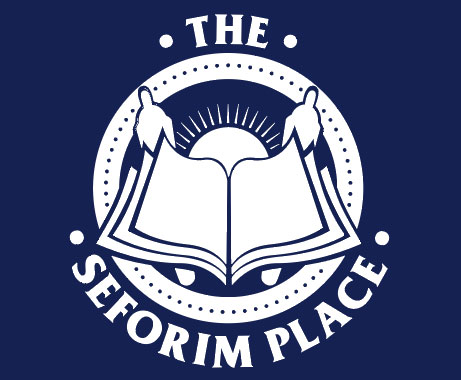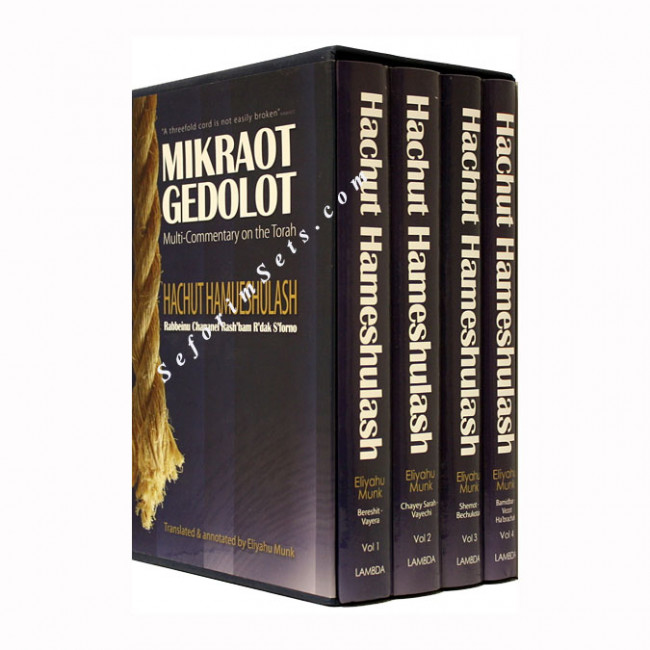
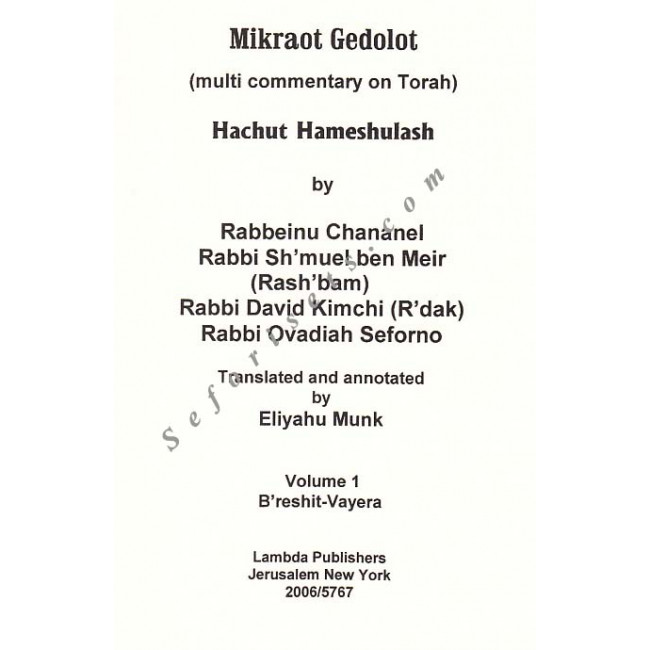
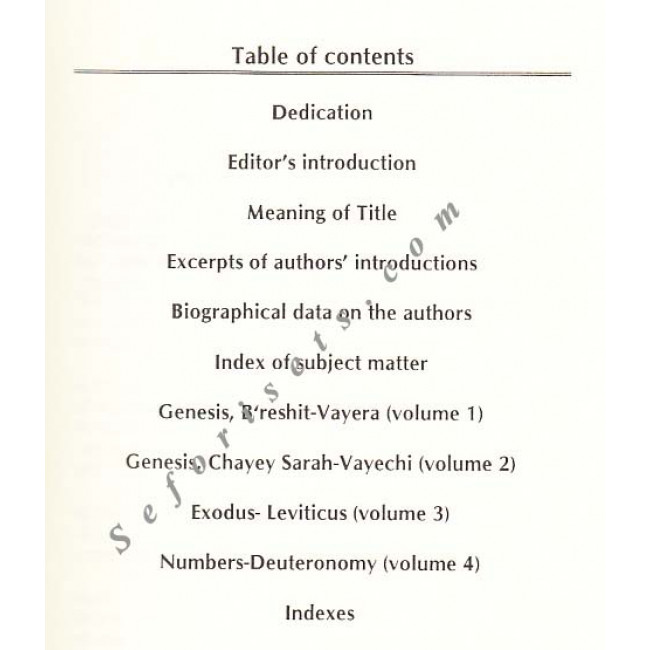
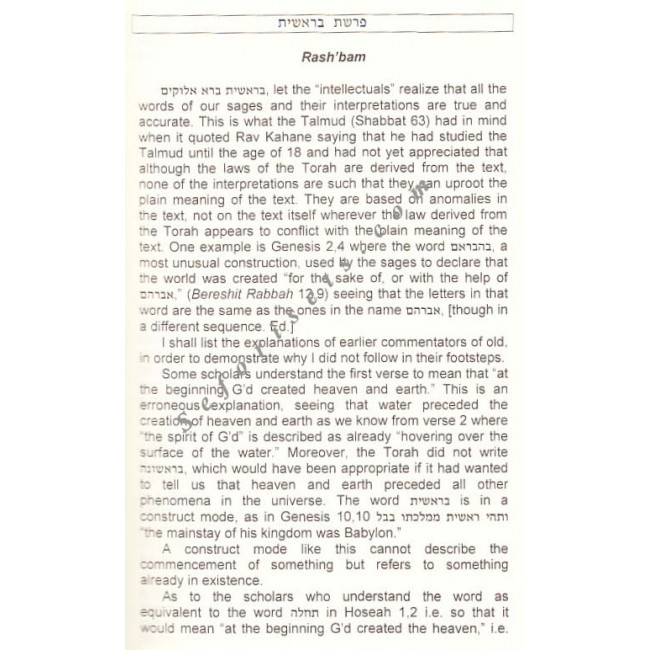




Translated and Annotated by: Eliyahu Munk
The selection of these four authors: Rabbeinu Chananel, Rash'bam, R'dak, and Seforno, was prompted by the desire to acquaint the reader with exegetes who concentrate in the main on the peshat, the meaning of the text as it strikes the reader at the first cursory perusal of the text.
Rabbeinu Chananel (born approximately 975) was the head of the Yeshiva in Kairuan, which became internationally recognized as a great center of learning.
Rabbi Sh'muel ben Meir (Rash'bam) (approximately 1085 - 1174) was one of the gransons of Rashi, and is well known for his concentration on the literal meaning of the text.
Rabbi David Kimchi (R'dak) (1160 - 1235) was born in Narbonne, wrote commentary on the Tanach, and is well known for his major work dealing with grammar of the Holy Tongue, Sefer Hashorashim.
Rabbi Ovadiah Seforno (born 1470) served as the Rabbi of Rome for over 30 years and was a physician.
On the meaning of the title Hachut Hameshulash:
In Kohelet 4, 9-12 we read the following statement by King Solomon, the author: “Two are better off than one, in that they have greater benefit from their joint endeavours. For should they fall, one can raise the other; but woe betide to him who is alone and falls with no companion to raise him! Further, when two lie together they are warm; but how can he who is alone get warm? Also, if one attacks, two can stand up to him. A threefold cord is not readily broken!”
There are many interpretations offered for the final sentence in this paragraph. The one I prefer is that it does not refer to the obvious, i.e. that there is strength in numbers. Who needs Solomon to tell us this?
I therefore like the interpretation that Solomon refers to the three patriarchs, assuring his readers that when one is fortunate to have three role models such as Avraham, Yitzchok, and Yaakov in one’s genetic fabric one can be confident that with a little effort by oneself one can face this world which is beset by so many problems.
Applied to Torah study, I am convinced that if one studies Torah with 3 or more commentators one will be assured of success in one’s endeavours to gain greater insights into G’d’s message to us. By presenting the reader with even four classic commentaries in these volumes, I trust that I have made a contribution to his or her deepening their understanding of the written text of the Torah.
The translator, Eliyahu Munk, was born in Frankfurt on Main, where he received his education at the Samson Rafael Hirsch Realschule, and the Yeshiva of the late Rabbi Joseph Breuer, of blessed memory. He continued his education at the Yeshiva in Gateshead, England. He served in Jewish education (primarily as a teacher) for almost 30 years in Toronto, Canada.
| Book Attributes | |
| Format | 7" X 9.6" 4 Vol Gift Boxed Set |
- Model: MGHHM-4
- Weight: 7.60lb
